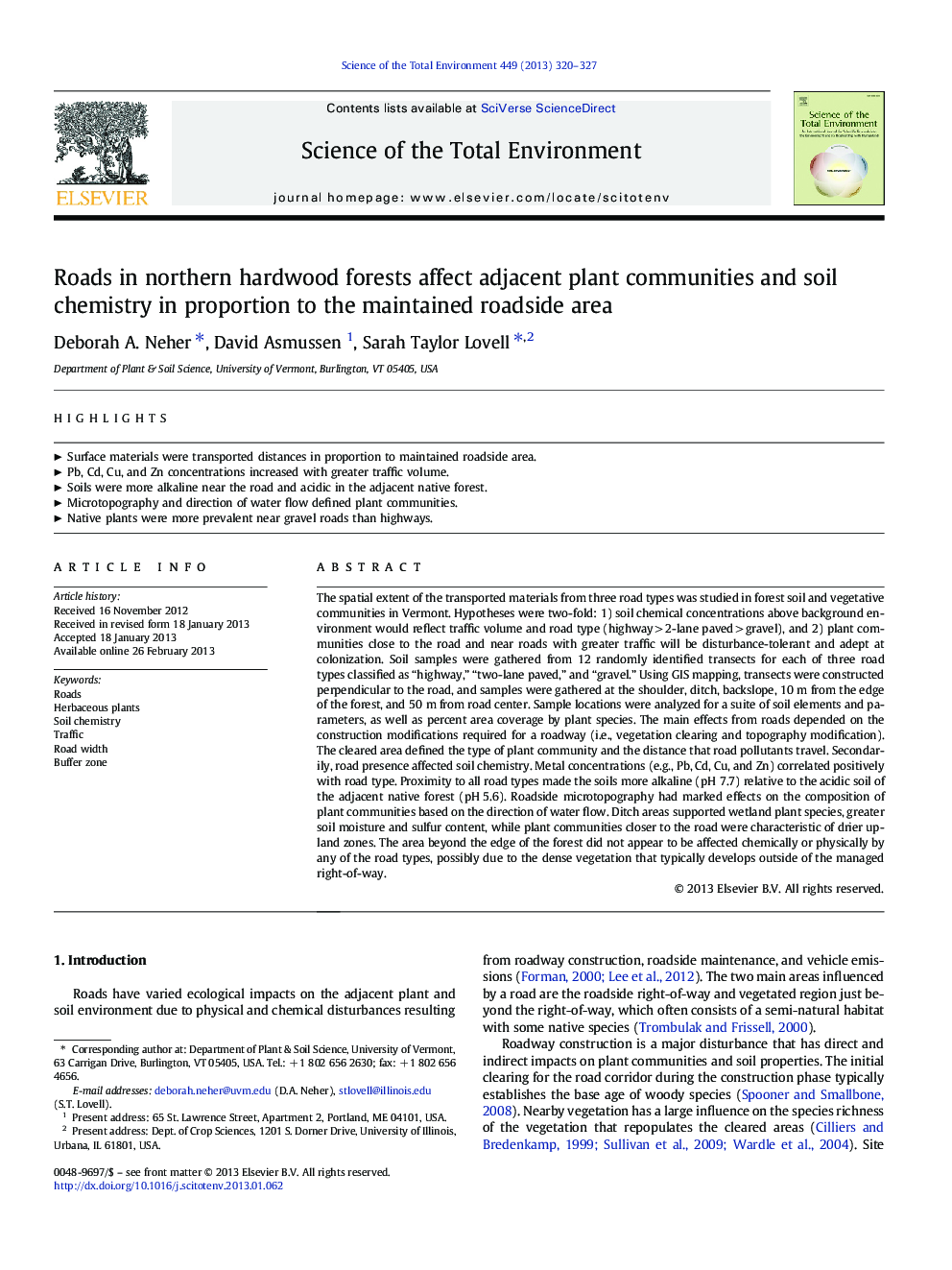| کد مقاله | کد نشریه | سال انتشار | مقاله انگلیسی | نسخه تمام متن |
|---|---|---|---|---|
| 4428871 | 1619805 | 2013 | 8 صفحه PDF | دانلود رایگان |

The spatial extent of the transported materials from three road types was studied in forest soil and vegetative communities in Vermont. Hypotheses were two-fold: 1) soil chemical concentrations above background environment would reflect traffic volume and road type (highway > 2-lane paved > gravel), and 2) plant communities close to the road and near roads with greater traffic will be disturbance-tolerant and adept at colonization. Soil samples were gathered from 12 randomly identified transects for each of three road types classified as “highway,” “two-lane paved,” and “gravel.” Using GIS mapping, transects were constructed perpendicular to the road, and samples were gathered at the shoulder, ditch, backslope, 10 m from the edge of the forest, and 50 m from road center. Sample locations were analyzed for a suite of soil elements and parameters, as well as percent area coverage by plant species. The main effects from roads depended on the construction modifications required for a roadway (i.e., vegetation clearing and topography modification). The cleared area defined the type of plant community and the distance that road pollutants travel. Secondarily, road presence affected soil chemistry. Metal concentrations (e.g., Pb, Cd, Cu, and Zn) correlated positively with road type. Proximity to all road types made the soils more alkaline (pH 7.7) relative to the acidic soil of the adjacent native forest (pH 5.6). Roadside microtopography had marked effects on the composition of plant communities based on the direction of water flow. Ditch areas supported wetland plant species, greater soil moisture and sulfur content, while plant communities closer to the road were characteristic of drier upland zones. The area beyond the edge of the forest did not appear to be affected chemically or physically by any of the road types, possibly due to the dense vegetation that typically develops outside of the managed right-of-way.
► Surface materials were transported distances in proportion to maintained roadside area.
► Pb, Cd, Cu, and Zn concentrations increased with greater traffic volume.
► Soils were more alkaline near the road and acidic in the adjacent native forest.
► Microtopography and direction of water flow defined plant communities.
► Native plants were more prevalent near gravel roads than highways.
Journal: Science of The Total Environment - Volume 449, 1 April 2013, Pages 320–327